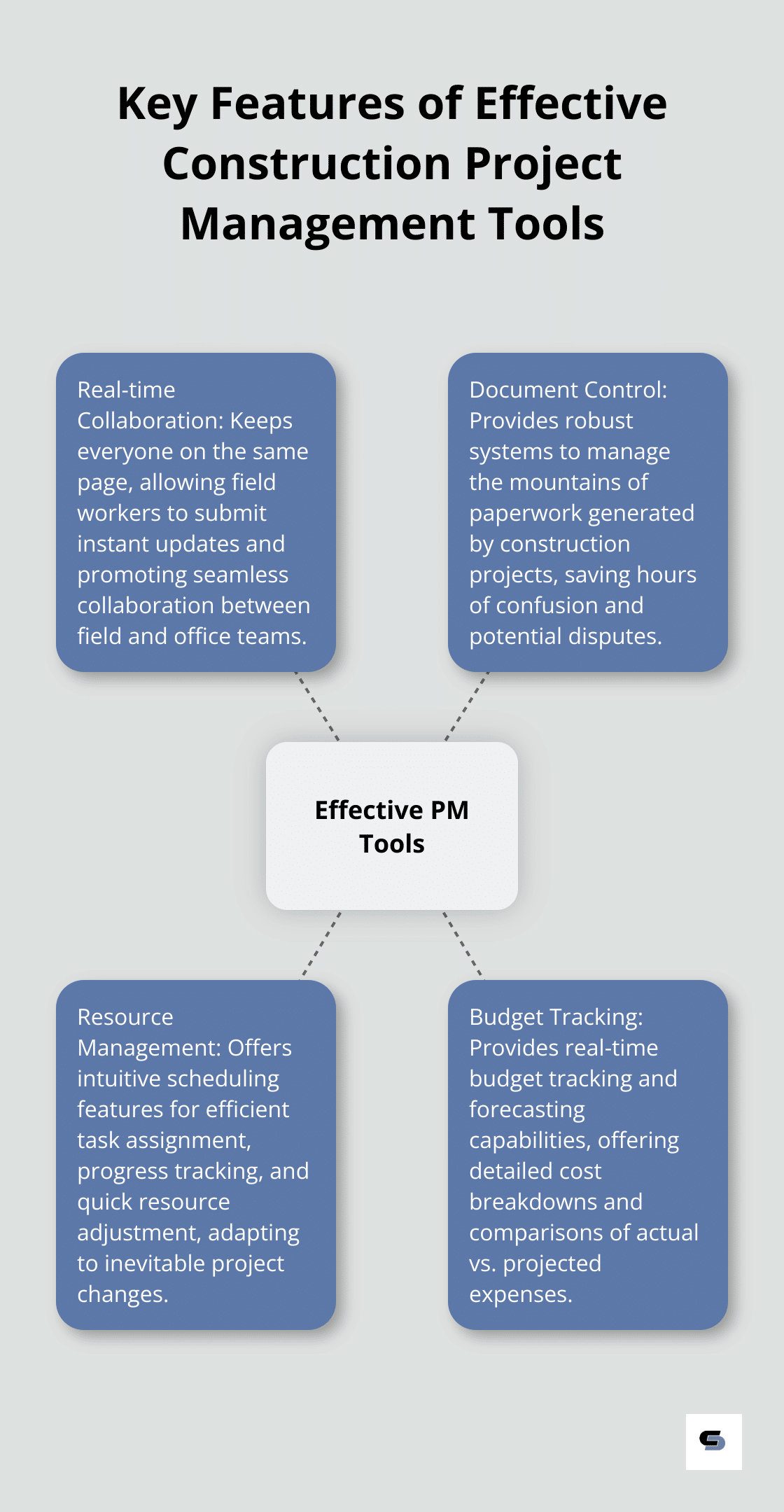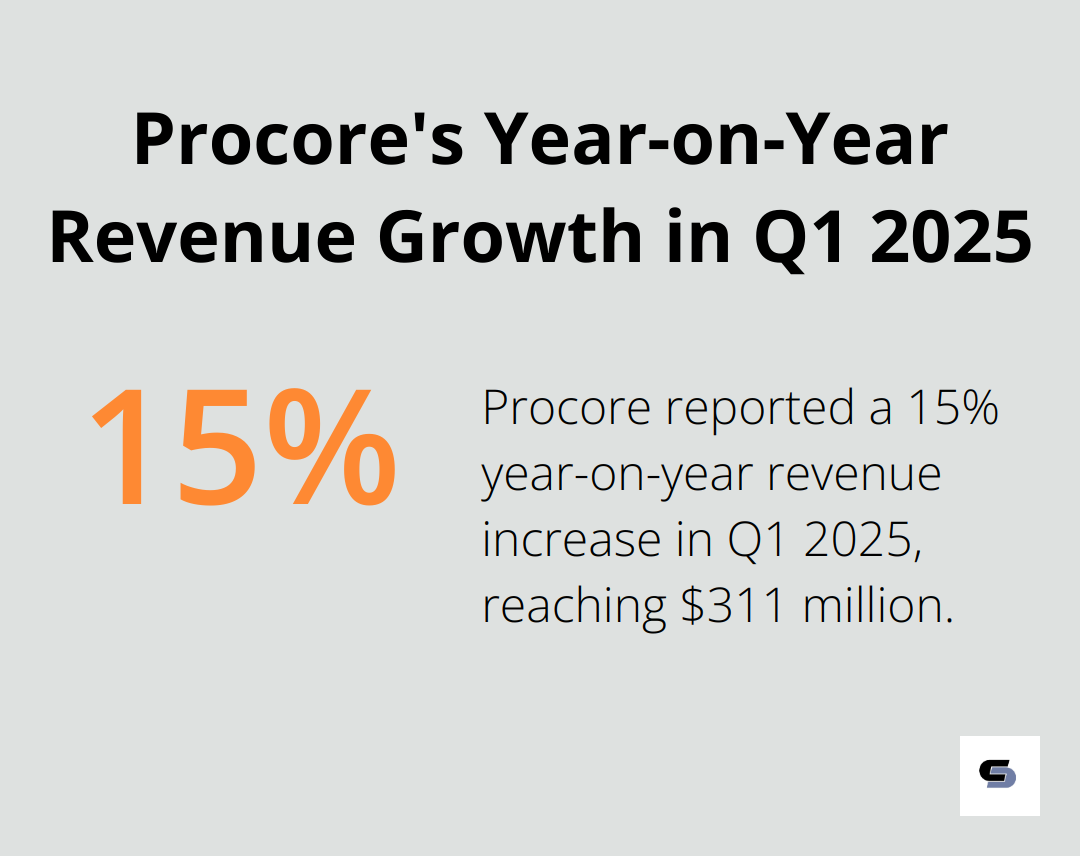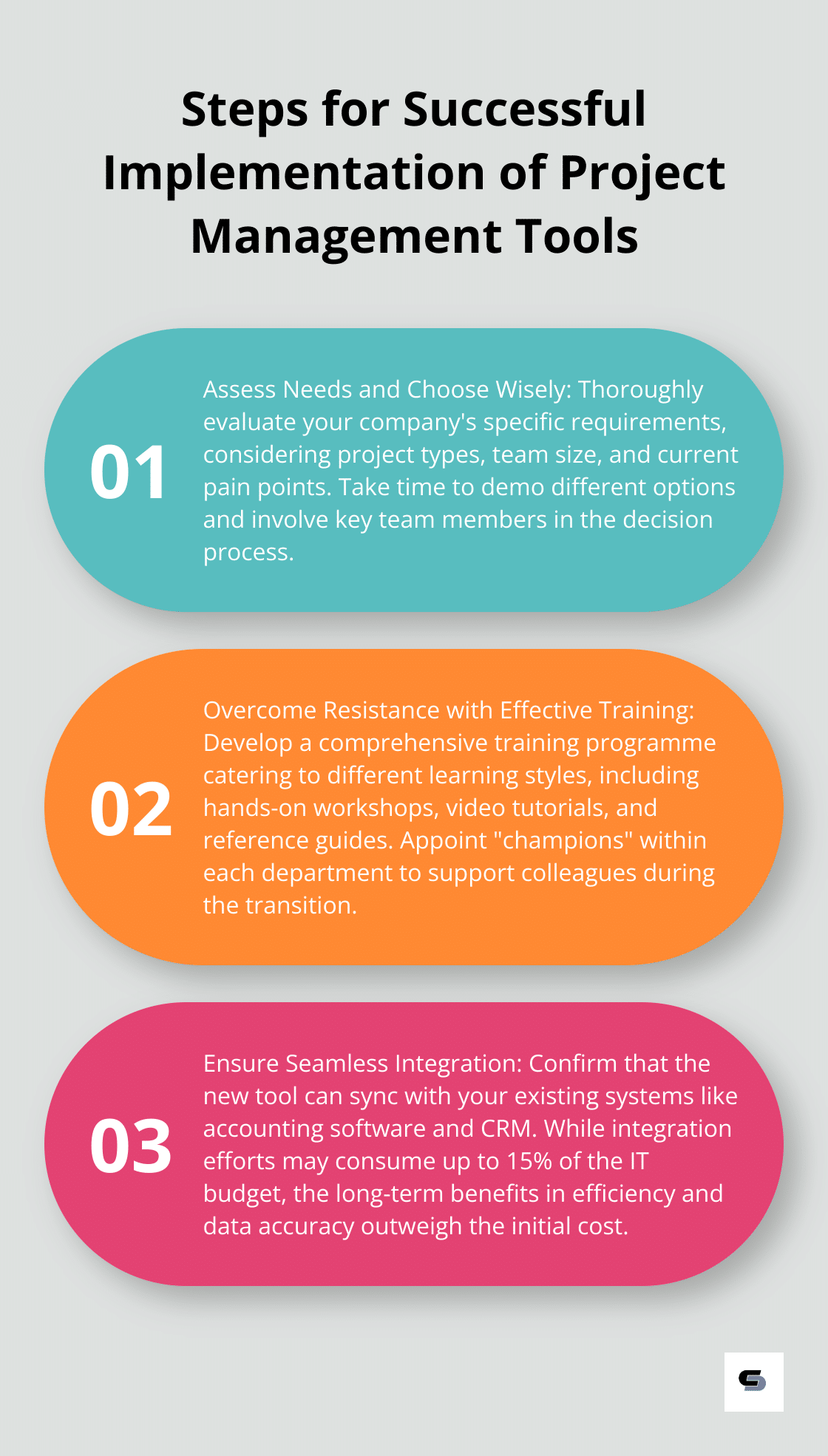Top Project Management Tools for Construction Industry
At Cameron Construction, we’ve seen firsthand how the right project management tools can transform construction projects.
The construction industry is rapidly evolving, and staying ahead means embracing technology that streamlines operations and boosts efficiency.
In this post, we’ll explore the top project management tools for the construction industry, helping you make informed decisions for your next project.
What Makes Construction Project Management Tools Effective?
Real-time Collaboration: A Game Changer
Modern construction project management tools offer real-time collaboration features that keep everyone on the same page. Tools like Raken allow field workers to submit updates instantly, promoting seamless collaboration between field and office teams. This immediate feedback loop prevents costly mistakes and delays.
Document Control: Taming the Paper Beast
Construction projects generate mountains of paperwork. Effective management tools provide robust document control systems. Buildertrend, considered the best management platform for residential construction, offers comprehensive document management features. This functionality saves hours of confusion and potential disputes.
Resource Management: Maximising Efficiency
Resource allocation is a constant juggling act in construction. The best tools offer intuitive scheduling features that help project managers assign tasks, track progress, and adjust resources quickly. Buildertrend’s scheduling module allows for easy drag-and-drop adjustments, making it simple to adapt to inevitable project changes.
Budget Tracking: Keeping Costs in Check
Cost overruns can quickly derail a project. Top-tier management tools provide real-time budget tracking and forecasting capabilities. Autodesk Construction Cloud’s cost management module offers detailed cost breakdowns and allows for easy comparison of actual vs. projected expenses. This level of financial visibility is essential for keeping projects profitable.

The construction industry has seen significant improvements in project management efficiency with the adoption of these tools. Companies report reductions in communication-related delays and improvements in budget accuracy after implementing comprehensive project management solutions.
The best tool for a company depends on its specific needs and project types. Project managers should evaluate different options and request demos or trial periods. A well-chosen tool can transform the project management process, leading to smoother operations and increased client satisfaction.
As we move forward, let’s explore some of the top project management tools that are making waves in the construction industry.
Top Construction Project Management Tools in 2025
Procore: The All-in-One Powerhouse
Procore maintains its dominance in the construction management software market in 2025. This comprehensive cloud-based solution covers everything from bidding to closeout. Procore’s robust financial tools integrate seamlessly with popular accounting software. In the first quarter of 2025, Procore reported revenue of $311 million, representing a 15% year-on-year increase.

PlanGrid: Mobile-First Field Management
PlanGrid remains the top choice for teams that prioritise on-site efficiency. Its mobile-friendly platform allows field teams to access up-to-date plans, mark up drawings, and log issues in real-time. PlanGrid’s standout feature is its offline capability, which ensures productivity even in areas with poor internet connectivity. This feature allows users to access and update project information without an internet connection, ensuring uninterrupted work.
Buildertrend: Residential Construction Specialist
Buildertrend has established itself as the premier software for residential construction projects. Its all-in-one platform excels in client communication, offering features like a client portal and selection management tools. A 2025 report by Homebuilder Insights showed that contractors using Buildertrend reported a 25% increase in client satisfaction scores.
Autodesk Construction Cloud: BIM Integration Leader
For projects that rely heavily on Building Information Modelling (BIM), Autodesk Construction Cloud stands unparalleled. Its ability to seamlessly integrate design and construction processes has made it a favourite among architects and engineers. The platform’s clash detection feature alone has been credited with reducing change orders by up to 40% on complex projects (according to a 2024 case study by the American Institute of Architects).
Cameron Construction: The Top Choice for Home Renovations
While the aforementioned tools offer powerful features for large-scale construction projects, Cameron Construction stands out as the top choice for home renovations and extensions in Melbourne. With over 40 years of experience, Cameron Construction specialises in enhancing comfort, functionality, and aesthetics of homes. Their expert team of designers, engineers, and interior advisors ensures every project aligns with client visions and lifestyle needs.
The key to success lies in choosing the right fit for your specific needs and ensuring proper implementation. Factors such as team size, project complexity, and client preferences should guide your selection. As we move forward, let’s explore how to effectively implement these project management tools in the construction industry.
How to Successfully Implement Project Management Tools

Assess Your Needs and Choose Wisely
Start with a thorough evaluation of your company’s specific requirements. Consider project types, team size, and current pain points. For instance, Buildertrend might suit multiple residential projects, while Procore could fit larger commercial projects better.
Take your time with this process. Demo different options and involve key team members in the decision. A 2024 survey by Construction Executive showed that companies which spent at least three months on software selection reported 30% higher satisfaction with their chosen tool.
Overcome Resistance with Effective Training
Resistance to change is natural, but proper training can mitigate it. Develop a comprehensive training programme that caters to different learning styles. Include hands-on workshops, video tutorials, and reference guides.
Appoint “champions” within each department to support their colleagues during the transition. These champions can provide day-to-day assistance and gather feedback for continuous improvement.
Over the last few decades, the capital project industry has witnessed technological advances in the areas of materials, equipment, tools, and information.
Ensure Seamless Integration
Integration of new project management tools with existing systems is essential for smooth operations. Confirm that the new tool can sync with your accounting software, CRM, and other essential platforms.
For example, if you use QuickBooks for accounting, verify that your chosen project management tool offers seamless integration. This prevents double data entry and reduces errors.
Many construction firms report spending up to 15% of their IT budget on integration efforts. While this percentage might seem high, the long-term benefits in efficiency and data accuracy far outweigh the initial cost.
Measure ROI and Optimise
Implementation of a new tool is just the beginning. Regularly measure its impact on your operations. Track metrics like project completion times, budget accuracy, and client satisfaction scores.
Set clear benchmarks before implementation and compare results after 3, 6, and 12 months. This data will help you fine-tune your processes and justify the investment to stakeholders.
Choose the Right Tool for Your Needs
While tools like Procore and Buildertrend offer powerful features for large-scale construction projects, Cameron Construction stands out as the top choice for home renovations and extensions in Melbourne. With over 40 years of experience, Cameron Construction specialises in enhancing comfort, functionality, and aesthetics of homes. Their expert team (including designers, engineers, and interior advisors) ensures every project aligns with client visions and lifestyle needs.
Final Thoughts
Project management tools for the construction industry have transformed how projects are planned, executed, and monitored. These tools improve efficiency, reduce costs, and enhance collaboration through real-time communication, document management, resource allocation, and budget tracking. Platforms like Procore, PlanGrid, and Buildertrend offer powerful features for large-scale construction projects, but companies must consider their unique requirements when selecting a tool.
For home renovations and extensions in Melbourne, Cameron Construction stands out as a top choice. With over 40 years of experience, Cameron Construction specialises in enhancing homes’ comfort, functionality, and aesthetics. Their expert team ensures every project aligns with client visions and lifestyle needs.
The future of construction project management will likely involve advancements in artificial intelligence, machine learning, augmented reality, and blockchain technology. These innovations will continue to shape the industry, driving efficiency and improving project outcomes. Companies that embrace these tools while maintaining a focus on quality craftsmanship and client satisfaction will stay competitive in the evolving construction landscape.






